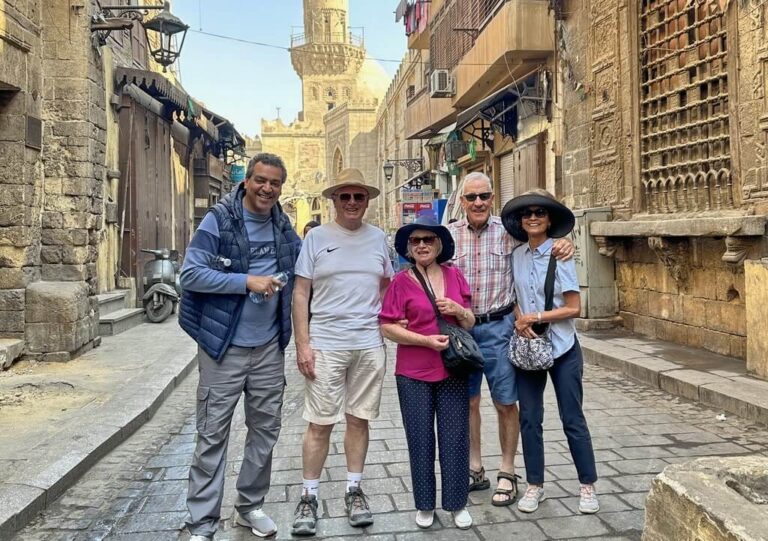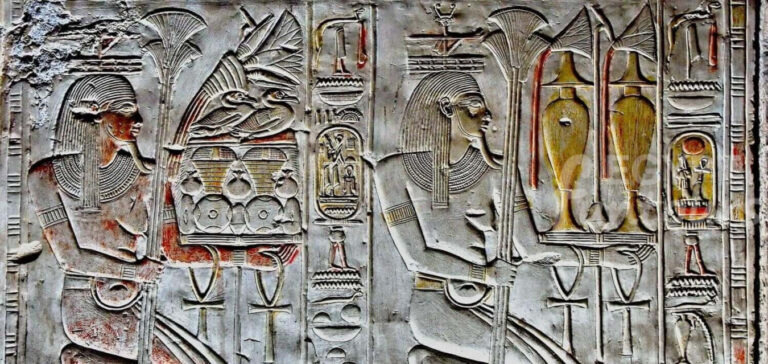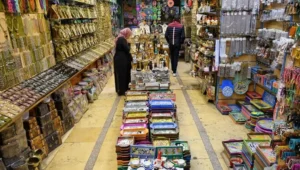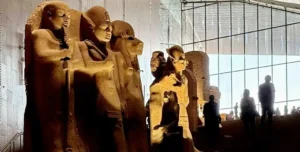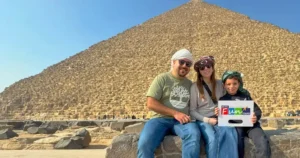Kom Ombo Temple
Kom Ombo Temple sits on the banks of the Nile, about 23 miles north of Aswan. It is unusual because it dedicates to two gods, Horus and Sobek. Sobek was the crocodile god of Nile fertility. The bend of the river here was once home to a large number of Nile crocodiles, which the ancient Egyptians held as sacred. Indeed, a small chapel of Hathor within the temple holds a small collection of mummified crocodiles. The live crocodiles have thankfully been gone for a long time. The temple has two of everything to accommodate the two gods. Among the reliefs on the walls—mainly from the late and Roman periods—are detailed images of a set of medical instruments.

Scenes to see depicted on the walls of the Kom Ombo temple
- The offering presentation on the front wall at the side of the crocodile Sobek (King Ptolomy is standing while holding offerings in front of the holy triad Sobek, his wife, and their son, behind the king stands the high priest followed by female figures from the royal palace with 50 Hieroglyphic lines of inscriptions.
- The purification of the king by Horus the Falcon God, and Thot the Ibis god of wisdom.
- The coronation of the king accompanied by Isis the goddess of love, Sekhmet, Horus the father, and Horus the son.
- The surgical instruments.
- Here, you can also see well-preserved bases of what were once full-height walls. This allows you to see how the Egyptians made the stone blocks fit so closely together using wooden inserts and water.


Unusual Double Temple
The Temple of Kom Ombo is an unusual double temple that builders built during the Ptolemaic dynasty’s rule in the Egyptian town of Kom Ombo. One side of the temple dedicates to the crocodile god Sobek, god of fertility and creator of the world. The other side dedicates to the falcon god Haroeris, also known as Horus the Elder.


Ptolemy VI Philometor (180-145 B.C.) started the temple at the beginning of his reign, and other Ptolemys added to it. Most notably, Ptolemy XIII (47-44 B.C.) built the inner and outer hypo-style halls. The Nile, earthquakes, and later builders who used the stones for other projects have destroyed much of the temple. Copts, who once used the temple as a church, defaced some of the reliefs inside. We display just three of the three thousand crocodile mummies discovered in the vicinity inside the temple.

